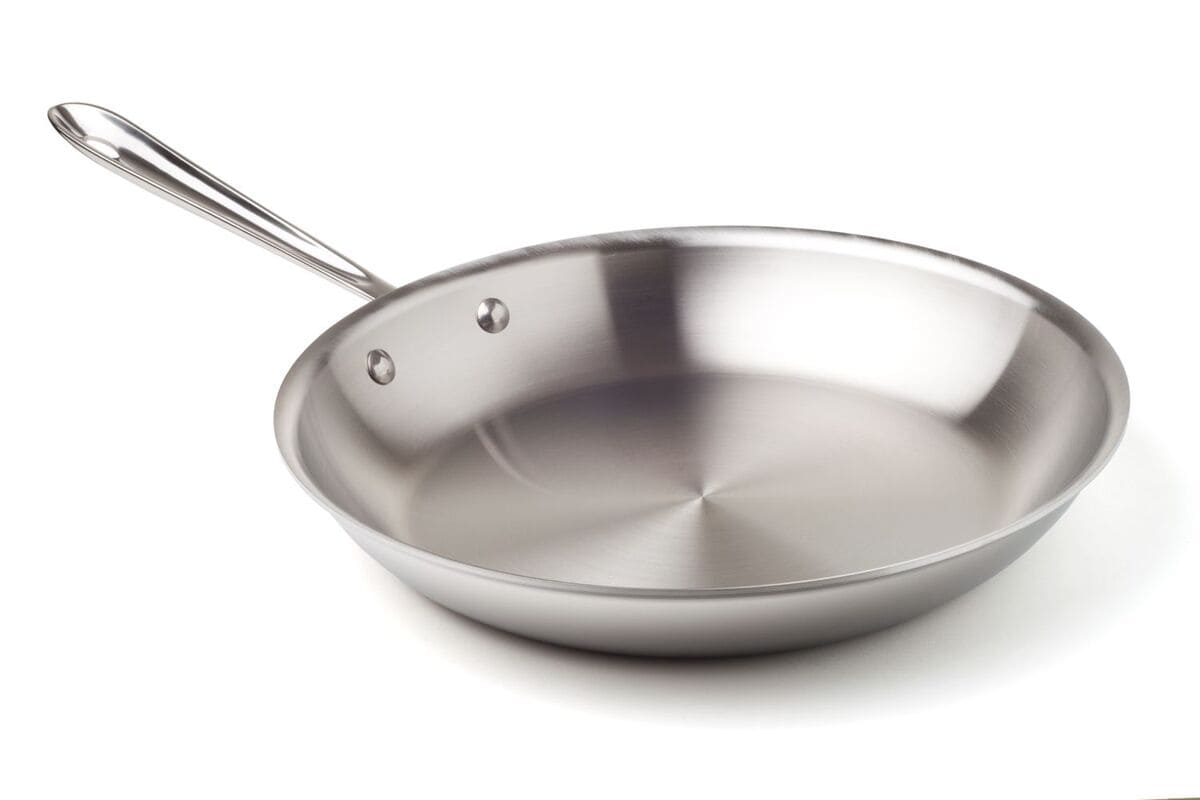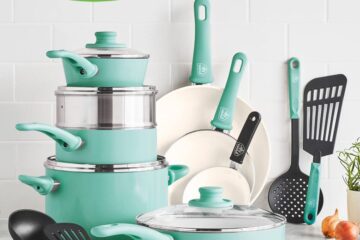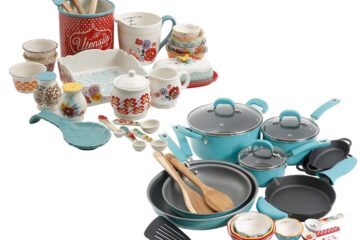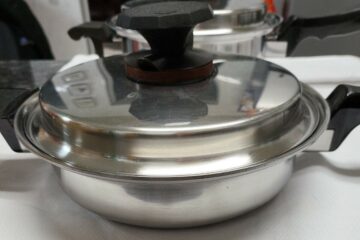Anodized cookware has become increasingly popular in recent years, but many people are still unsure about what it actually means. Essentially, anodization is an electrochemical process that converts the surface of a metal object into a durable, corrosion-resistant finish. In the case of cookware, anodization is used to create a protective layer on the surface of aluminum pots and pans.
This process involves immersing the aluminum in a chemical bath and applying an electrical current to it, which causes the aluminum to oxidize and form a hard, protective layer. This layer is not only resistant to corrosion, but it also makes the cookware more durable and resistant to scratches and other types of damage. Additionally, anodized cookware is non-reactive, which means that it won’t react with acidic foods like tomatoes or vinegar, making it a great choice for cooking a wide variety of dishes.
What is Anodizing?
Anodizing is an electrolytic process used to add a protective layer to metals, such as aluminum, by increasing the thickness of the natural oxide layer on the surface. The process involves immersing the metal in an electrolyte solution and applying an electrical current, causing the metal to oxidize and form a layer of aluminum oxide on the surface.
The thickness of the oxide layer can be controlled by adjusting the voltage and time of the process. Anodizing can result in a range of colors, depending on the thickness of the oxide layer, which can be useful for decorative purposes.
In the case of cookware, anodizing is used to create a hard, non-reactive surface that is resistant to scratches, wear, and corrosion. Anodized cookware is also non-stick, which means it requires less oil or fat for cooking and is easier to clean.
Anodized cookware is typically made from aluminum or hard-anodized aluminum, which is more durable and scratch-resistant than regular aluminum. Hard-anodized aluminum undergoes a more extensive anodizing process, resulting in a thicker, more durable oxide layer that can withstand high temperatures and resist scratches and wear.
The Anodizing Process for Cookware
When it comes to cookware, anodizing is a process that is used to protect the surface of the metal from reacting with acidic foods and to make it stronger and more durable. Here are the steps involved in the anodizing process for cookware:
Step 1: Cleaning the Cookware
Before the anodizing process can begin, the cookware must be thoroughly cleaned to remove any dirt, grease, or other contaminants. This is important because any impurities on the surface of the cookware can interfere with the anodizing process and prevent it from being effective.
Step 2: Anodizing the Cookware
Once the cookware has been cleaned, it is ready to be anodized. Anodizing is an electrolytic process that involves immersing the cookware in a chemical bath and applying an electrical current. This causes a layer of oxide to form on the surface of the cookware, which helps to protect it from reacting with acidic foods.
Step 3: Sealing the Cookware
After the anodizing process is complete, the cookware is sealed to help protect the surface from scratches and other damage. This is typically done by immersing the cookware in boiling water or steam, which causes the oxide layer to expand and seal the surface of the cookware.
Benefits of Anodized Cookware
Anodized cookware has become increasingly popular in recent years due to its durability, non-reactivity, and heat distribution. Here are some of the benefits of using anodized cookware:
Durability
One of the main advantages of anodized cookware is its durability. The anodization process creates a layer of oxide on the surface of the cookware, which makes it more resistant to corrosion and wear. This layer also makes the cookware more scratch-resistant, ensuring that it lasts longer than other types of cookware. Anodized cookware is also less likely to dent or warp over time, making it a wise investment for any kitchen.
Non-Reactivity
Anodized cookware is also non-reactive, meaning that it won’t react with acidic or alkaline foods during the cooking process. This is because the anodization process creates a non-porous surface that prevents metal ions from leaching into the food. This makes anodized cookware a healthier option than other types of cookware, especially those made from reactive materials like copper or aluminum.
Heat Distribution
Another benefit of anodized cookware is its excellent heat distribution. The anodization process creates a surface that is highly conductive, allowing heat to spread evenly across the cooking surface. This means that food cooks more evenly and quickly, reducing the risk of burning or overcooking. Anodized cookware is also more energy-efficient than other types of cookware, as it requires less heat to achieve the same cooking results.
Types of Anodized Cookware
When it comes to anodized cookware, there are several types available in the market. Each type has its own unique properties and characteristics. In this section, we will discuss the three most common types of anodized cookware.
Hard Anodized Cookware
Hard anodized cookware is the most popular type of anodized cookware. It is made by subjecting the aluminum to an electrochemical process that hardens the surface of the metal. This process makes the cookware more durable, scratch-resistant, and non-reactive to acidic foods. Hard anodized cookware is also known for its excellent heat distribution and retention properties, which makes it ideal for cooking a variety of dishes.
Titanium Anodized Cookware
Titanium anodized cookware is another popular type of anodized cookware. It is made by subjecting the aluminum to an electrochemical process that bonds a layer of titanium to the surface of the metal. This process makes the cookware more durable, scratch-resistant, and corrosion-resistant. Titanium anodized cookware is also known for its excellent heat distribution and retention properties, which makes it ideal for cooking a variety of dishes.
Ceramic Anodized Cookware
Ceramic anodized cookware is a relatively new type of anodized cookware. It is made by subjecting the aluminum to an electrochemical process that creates a ceramic layer on the surface of the metal. This process makes the cookware more durable, scratch-resistant, and non-stick. Ceramic anodized cookware is also known for its excellent heat distribution and retention properties, which makes it ideal for cooking a variety of dishes.
Care and Maintenance of Anodized Cookware
Cleaning Anodized Cookware
To keep anodized cookware in good condition, it is essential to clean it properly. Anodized cookware should be washed by hand with mild, non-abrasive cleansers. Avoid using steel wool, steel scouring pads, or harsh detergents as they can scratch the surface of the cookware. A powerful dishwashing detergent can be used to clean the cookware. Rinse the cookware with warm water and dry it thoroughly.
Seasoning Anodized Cookware
Anodized cookware does not require seasoning like cast iron cookware, but it is recommended to season it occasionally. To season anodized cookware, coat the surface with a small amount of cooking oil and heat it over low heat for a few minutes. Wipe off any excess oil with a paper towel. Seasoning the cookware will help to prevent food from sticking to the surface and will also protect the surface from scratches.
Avoiding Damage to Anodized Cookware
Anodized cookware is durable and scratch-resistant, but it can still be damaged if not handled properly. Avoid using metal utensils on the surface of the cookware as they can scratch the surface. Use wooden, silicone, or nylon utensils instead. Do not stack anodized cookware as it can cause scratches or damage to the surface. Store the cookware in a dry place to prevent moisture from building up.
Conclusion
In conclusion, anodized cookware is a popular choice for many home cooks and professional chefs due to its durability, non-reactive surface, and non-stick properties. Anodized cookware is made to last, and won’t show scratches or dents easily even with frequent use. Additionally, the non-stick surface makes it easy to cook without added oils, helping you maintain a healthy diet.
One final advantage of hard-anodized cookware is that it doesn’t need seasoning, unlike other kinds of cookware, such as cast iron. As long as you take the proper sanitary precautions and wipe your cookware down after opening it, you can use hard-anodized products right out of the box.
It is important to note that anodized cookware is not completely scratch-resistant, and using metal utensils or abrasive sponges can damage the surface. Therefore, it is recommended to use wooden or silicone utensils and gentle cleaning methods to prolong the lifespan of your anodized cookware.
Overall, anodized cookware is a versatile and durable option for anyone looking to upgrade their kitchen cookware. With proper care and maintenance, anodized cookware can last for many years and provide a reliable and non-reactive cooking surface for all your favorite dishes.



